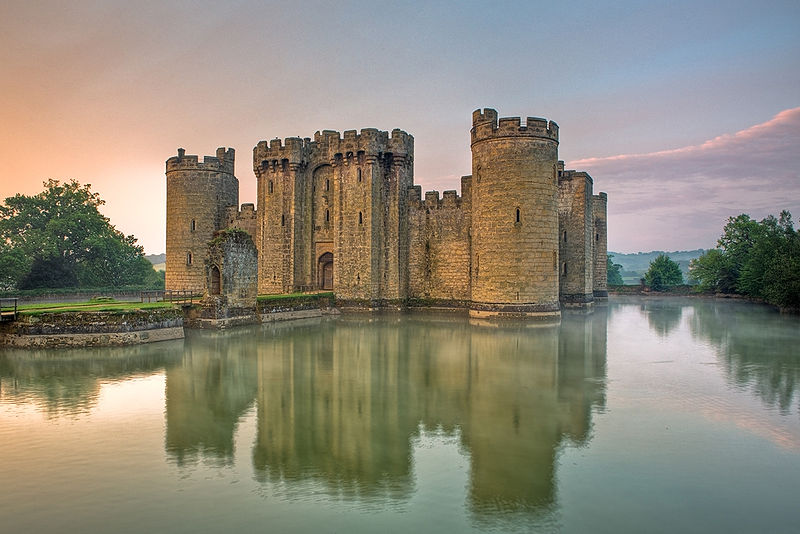To celebrate Sussex Day on Sunday June 16, here’s part two of our history of the county. You can read the first part here.
Rye will be celebrating Sussex Day at the town hall this Sunday at 12.30pm.
Sussex felt some of the effects of King Henry VIII’s split from the Catholic church in Rome. In 1538 it was ordered that the shrine of St. Richard in Chichester cathedral should be destroyed. Henry’s minister, Thomas Cromwell said of it: “There was a certain kind of idolatry about it.” As consecutive monarchs changed the religion, so Protestants and Catholics alike suffered persecution and death. During the reign of Henry’s Catholic daughter Mary, 41 Protestants were burnt as heretics in Sussex. A group of 17 were burnt in Lewes during her reign, earning the name The Lewes Martyrs. Three more Protestants were burned in East Grinstead on July 18 1556. The Martyrs Memorial, a well-known landmark in the town, is by St. Swithin’s church. Her Protestant half-sister, Elizabeth I, passed the Acts of Supremacy and Uniformity in 1559, restoring the Protestant faith to England. Again, people died for their religion, although fewer than under her sister, who was known as Bloody Mary. The town of Rye had the reputation of being the most Protestant inclined town in Sussex, and was known as a “godly commonwealth”. There were burnings in the town, supposedly where Market Street now stands.
During the 17th century, Sussex seems to have missed most of the horrors of the English Civil War, although it didn’t escape entirely unscathed. Chichester and Arundel Castle were besieged and there was a small battle at Haywards Heath, when about 200 Royalist troops were killed or captured by the forces of parliament. Sussex was very much a supporter of parliament against the king, so it is interesting to find that King Charles II managed to travel through undetected after the Battle of Worcester in 1651, and take a boat to France and nine years of exile, from Shoreham.
Sussex holds at least one record that perhaps isn’t the best thing to be proud of. The last man to be subjected to the awful execution of peine forte et dure, literally being pressed to death, met his end in Horsham in 1741. He was indicted for robbery and murder, but when taken to court would not speak. He was, it was said, pretending to be lame and dumb. Witnesses were called who said that he was able to speak, so he was taken to Horsham Gaol, where he still refused to speak. To “encourage” him, he was laid flat on the ground and a 45 kilogram weight was laid across him. The encouragement didn’t work, so a further 45 kilogram weight was added. That didn’t work either, so a further 23 kilogram weight was added. By that stage he was, in reality, probably unable to speak. However, then the executioner lay down on top of him, adding in excess of 100 kilograms, at which point the man just died.
Sussex has done its fair share in defending the country during two world wars. At the Battle of the Boar’s Head, just before the catastrophic five-month long Battle of the Somme in 1916, when about one million men died, the Royal Sussex Regiment suffered terrible losses. In less than five hours, 349 men and 17 officers died. About 1,000 were either captured or wounded. Particularly tragic was the loss of 12 sets of brothers, three from just one family. It was known as ‘The Day Sussex Died.’ Between 1939-45, Sussex was very much on the front line, with its towns’ regular targets for enemy bombs. Sussex was involved in the preparations for D-Day in 1944, with members of the armed forces stationed in readiness to leave, and the landing craft and famous temporary Mulberry Harbours being put together just off our coastline.
The county of Sussex was divided into two ceremonial counties, East and West, in 1974. This was not the first time that the county was so divided. Following the Reform Act of 1832, which gave voting rights to more men, the county was split into the eastern and western divisions. The Local Government Act of 1882 saw the division into two administrative counties, obviously once, again east and west.
The county flag seems to date back to the 17th century, although the well-known shield with the blue ground and depiction of silver birds called martletts is based on the 14th century heraldic achievement of one of the Knights of the Shire, Sir John de Raynden. There is a carving of his arms on the gatehouse of Bodiam Castle. The shield was used, purely for decorative effect, by the cartographer John Speed, as the arms of the Kingdom of the South Saxons, when it is held by King Aelle, in The Theatre of the Empire of Great Britaine, his atlas published in 1611. In the modern version of the arms the martletts are gold.
Image Credits: WyrdLight.com/https://creativecommons.org/licenses/by-sa/3.0/deed.en https://commons.wikimedia.org/wiki/File:Bodiam-castle-10My8-1197.jpg https://creativecommons.org/licenses/by-sa/3.0/deed.en.



